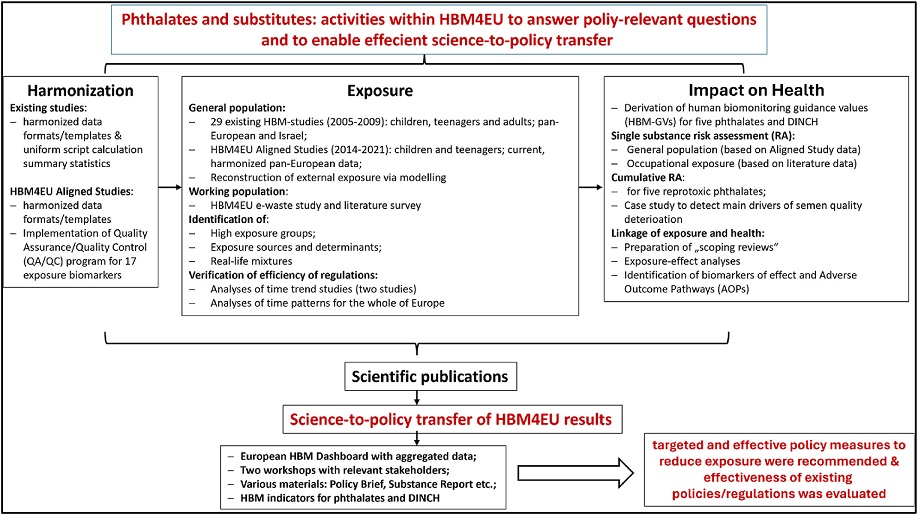Phthalates and substitute plasticizers: Main achievements from the European human biomonitoring initiative HBM4EU
Antje Gerofke, Rosa Lange, Nina Vogel, Phillipp Schmidt, Till Weber, Madlen David, Hanne Frederiksen, Kirsten Baken, Eva Govarts, Liese Gilles, Laura Rodriguez Martin, Žanna Martinsone, Tiina Santonen, Greet Schoeters, Martin Scheringer, Elena Domínguez-Romero, Marta Esteban López, Argelia Castaño Calvo, Holger M. Koch, Petra Apel, Marike Kolossa-Gehring
Int J Hyg Environ Health; online: 16. April 2024
Phthalates and the substitute plasticizer DINCH belong to the first group of priority substances investigated by the European Human Biomonitoring Initiative (HBM4EU) to answer policy-relevant questions and safeguard an efficient science-to-policy transfer of results. Human internal exposure levels were assessed using two data sets from all European regions and Israel. The first collated existing human biomonitoring (HBM) data (2005–2019). The second consisted of new data generated in the harmonized “HBM4EU Aligned Studies” (2014–2021) on children and teenagers for the ten most relevant phthalates and DINCH, accompanied by a quality assurance/quality control (QA/QC) program for 17 urinary exposure biomarkers. Exposures differed between countries, European regions, age groups and educational levels.
Toxicologically derived Human biomonitoring guidance values (HBM-GVs) were exceeded in up to 5% of the participants of the HBM4EU Aligned Studies. A mixture risk assessment (MRA) including five reprotoxic phthalates (DEHP, DnBP, DiBP, BBzP, DiNP) revealed that for about 17% of the children and teenagers, health risks cannot be excluded. Concern about male reproductive health emphasized the need to include other anti-androgenic substances for MRA. Contaminated food and the use of personal care products were identified as relevant exposure determinants paving the way for new regulatory measures. Time trend analyses verified the efficacy of regulations: especially for the highly regulated phthalates exposure dropped significantly, while levels of the substitutes DINCH and DEHTP increased.
The HBM4EU e-waste study, however, suggests that workers involved in e-waste management may be exposed to higher levels of restricted phthalates. Exposure-effect association studies indicated the relevance of a range of endpoints. A set of HBM indicators was derived to facilitate and accelerate science-to-policy transfer. Result indicators allow different groups and regions to be easily compared. Impact indicators allow health risks to be directly interpreted. The presented results enable successful science-to-policy transfer and support timely and targeted policy measures.
Highlights
- First comprehensive European HBM exposure data on phthalates and substitute plasticizers.
- Pronounced phthalate exposure reduction verifies the effectiveness of policy measures.
- Still, for 17% of the children and teenagers health risks cannot be excluded based on mixture risk assessment.
- Contaminated food and use of personal care products are key exposure determinants.>
- Successful science-to-policy transfer supports timely and targeted policy measures.
